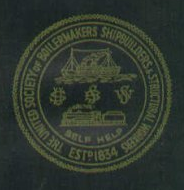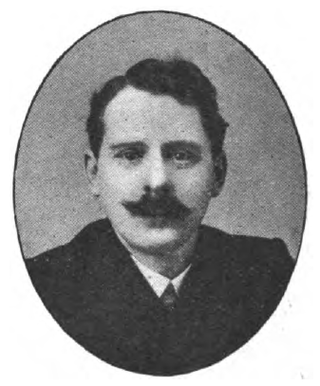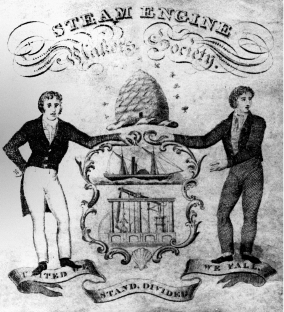| Merged into | Amalgamated Engineering Union |
|---|---|
| Founded | 1851 |
| Dissolved | 1920 |
| Headquarters | 110 Peckham Road, London |
| Location | |
Members | 300,000 (1979) [1] |
| Affiliations | TUC, IMF, Labour |
The Amalgamated Society of Engineers (ASE) was a major British trade union, representing factory workers and mechanics.
The history of the union can be traced back to the formation of the Journeymen Steam Engine, Machine Makers' and Millwrights' Friendly Society, in 1826, popularly known as the "Old Mechanics". [2] Its secretary, William Allan, and another leading figure in the union, William Newton, proposed forming a new union to bring together skilled workers from all engineering trades. [3] They invited a large number of other unions to become part a new Amalgamated Society of Engineers, Machinists, Smiths, Millwrights and Pattern-makers, which was soon shorted to the Amalgamated Society of Engineers (ASE). Other than the Old Mechanics, the only notable union to join was the Smiths Benevolent, Sick and Burial Society. Together with various small, local unions, they brought 5,000 members into the ASE on its creation in 1851, Allan becoming its first general secretary. [2]
The ASE was one of the 'New Model Unions' of the 1850s–1870s. These unions, which also included the Ironfounders, Builders, and Carpenters' societies, rejected Chartism and the ideas of Robert Owen in favour of a more moderate policy based on 'prudence', 'respectability' and steady growth. Great importance was attached to the question of finance, as substantial funds would not only provide maintenance for members involved in strike action, but also help to deter the employers from attacking the organisation. Since its members were skilled and relatively highly paid, it was possible for the ASE to charge contributions of one shilling a week and to build up a fund of unprecedented proportions. Initially, there were strict restrictions on membership; all must have completed an apprenticeship in their trade, and men who wore glasses were not permitted to join. [2]
The ASE was an immediate success, and within a year, membership had more than doubled to 11,000. [2] However, in 1852, it agreed a ban on overtime and piecework. In retaliation, employers began an extended national lockouts, which greatly weakened the organisation, [3] an event repeated in 1896. But it maintained its pre-eminent position in the industry, and many local and regional unions joined.
The union was invited to join the Federation of Engineering and Shipbuilding Trades (FEST) when it was formed in 1891, but refused to do so. It also had a turbulent relationship with the Trades Union Congress (TUC), not holding membership in 1905 or from 1907 to 1918. However, it was a founder member of the General Federation of Trade Unions (GFTU). It finally joined the FEST in 1905, hoping to persuade its other members to amalgamate with it. Six small unions did so, but the other refused, and the ASE again left the FEST in 1918. [2]
The ASE set up overseas branches in the United States, Canada, Australia, New Zealand and South Africa. In 1891, they had only 5,000 members between them, but by 1920 they had grown to 32,000 members. The union set up an Australasian Council, and in 1906 a South African Council, and the branches in those countries thereafter had a considerable degree of autonomy. They had their own full-time secretaries and organisers, and became the leading unions for engineers in those countries. However, in North America, the union failed to grow. American Organiser Isaac Cowen prioritised strong links with the union in Britain, and the union there came to largely consist of British members who were temporarily working overseas. Many of them left in 1905 to join the Industrial Workers of the World, and the ASE decided in 1920 to transfer the remaining branches to the International Association of Machinists. [1]
In 1920, the ASE put out a fresh call for other unions to merge with it. Seventeen unions balloted their members on a possible merger, and nine voted in favour of amalgamation. Together, they formed the Amalgamated Engineering Union. [2]
The ASE was an early affiliate of the Labour Party. It sponsored candidates in each election from 1906 on, with several of its candidates winning election. [4]

The Ceramic and Allied Trades Union (CATU) was a trade union representing pottery workers in the United Kingdom.
The Workers' Union was a general union based in the United Kingdom, but with some branches in other countries. During the 1910s, it was the largest general union in the UK, but it entered a rapid decline in the 1920s, and eventually became part of the Transport and General Workers' Union (TGWU).

The Amalgamated Engineering Union (AEU), originally known as the Amalgamated Society of Engineers, was an Australian trade union which existed between 1852 and 1973. It represented engineers, as well as some other metal trades workers.
New Model Trade Unions (NMTU) were a variety of Trade Unions prominent in the 1850s and 1860s in the UK. The term was coined by Sidney and Beatrice Webb in their History of Trade Unionism (1894), although later historians have questioned how far New Model Trade Unions represented a 'new wave' of unionism, as portrayed by Webbs.

The Amalgamated Engineering Union (AEU) was a major British trade union. It merged with the Electrical, Electronic, Telecommunications and Plumbing Union to form the Amalgamated Engineering and Electrical Union in 1992.
The National Union of General Workers (NUGW) was an early general union in the United Kingdom, the most important general union of its era.
The National Amalgamated Union of Labour (NAUL) was a general union in the United Kingdom.

The Amalgamated Society of Boilermakers, Shipwrights, Blacksmiths and Structural Workers (ASB) was a trade union in the United Kingdom. Many of its members worked in shipbuilding, in which industry it was the leading trade union, while over time it also developed strength in engineering and construction.

The Irish Trades Union Congress (ITUC) was a union federation covering the island of Ireland.

The Confederation of Shipbuilding and Engineering Unions (CSEU), often known as the Confed is a trade union confederation in the United Kingdom.

Isaac Haig Mitchell was a Scottish trade unionist.

William Allan was a British trade unionist.

The Electrical Trades Union (ETU) was a trade union representing electricians in the United Kingdom, much of its membership consisting of wiring fitters and telephone engineers.

The Steam Engine Makers' Society (SEM) was an early trade union representing engineers in the United Kingdom.
George Peet was a British communist activist and trade unionist.
James Gorman was a British politician and trade unionist.
The Notts Trades Council, formally known as the Nottinghamshire Nottingham and Mansfield Trades Council, brings together trade unionists in Nottinghamshire, in England.
William Glennie was a Scottish trade unionist and political activist.
David S. Gardner was a British trade unionist.
The 1916 Hamilton machinists' strike was a labour dispute in Hamilton, Ontario, Canada involving between 1,500 and 2,000 workers employed in the manufacturing of munitions and other materials for World War I. It began on June 12 and involved those employed at all of the major manufacturers, including the National Steel Car Company, the Steel Company of Canada, Dominion Steel Foundry, Canadian Westinghouse Electric & Manufacturing Company, Fensom Elevators. Involving members of the International Association of Machinists, Amalgamated Society of Engineers, and unorganized workers, it ended in defeat for Hamilton's machinists.